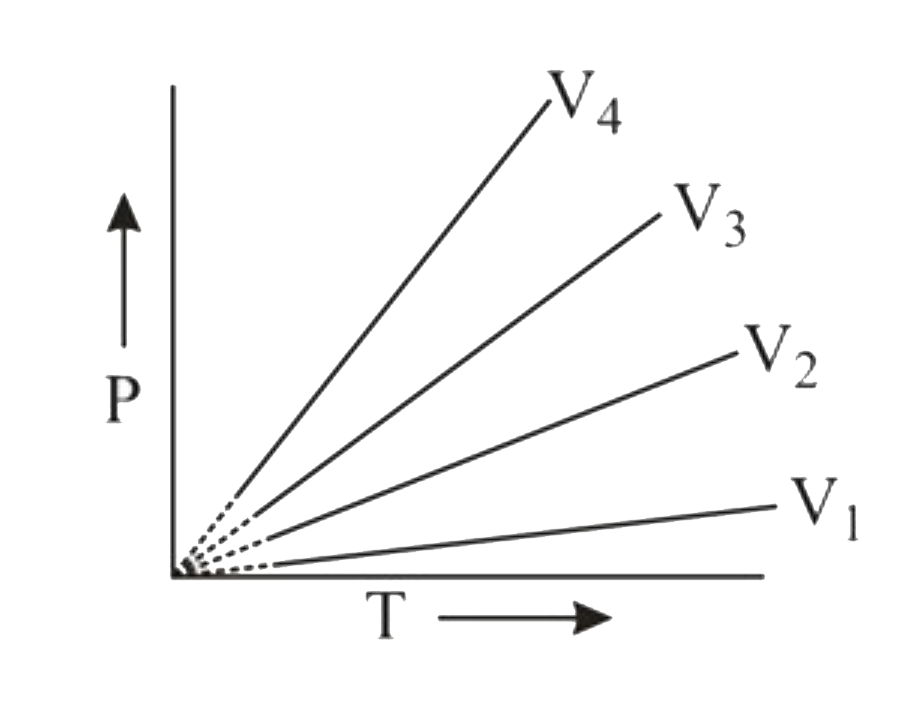Equations for an ideal gas is :
constant
None of these.
The correct Answer is:A
To solve the question regarding the equation for an ideal gas, we will derive and explain the ideal gas law step by step.
1. Understanding the Ideal Gas Law:
The ideal gas law is a fundamental equation in thermodynamics that relates the pressure (P), volume (V), temperature (T), and the number of moles (n) of an ideal gas. The equation is given by:
PV=nRT
where:
- P = pressure of the gas,
- V = volume of the gas,
- n = number of moles of the gas,
- R = universal gas constant (approximately 8.314J/(mol K)),
- T = absolute temperature of the gas in Kelvin.
2. Special Case for One Mole:
If we consider the case where there is 1 mole of gas (n=1), the equation simplifies to:
PV=RT
This is a specific case of the ideal gas law for one mole of an ideal gas.
3. Understanding the Conditions:
The ideal gas law assumes that the gas behaves ideally, which means:
- The gas particles do not interact with each other except during elastic collisions.
- The volume of the gas particles themselves is negligible compared to the volume of the container.
- The gas follows the law at relatively high temperatures and low pressures.
4. Other Equations:
The video also mentions another equation related to specific heat capacities:
CP−CV=R
This equation is valid for processes involving ideal gases but is not the ideal gas law itself. It relates the heat capacities at constant pressure (CP) and constant volume (CV).
5. Conclusion:
The ideal gas equation is indeed PV=nRT or PV=RT for one mole of gas. Any other equations mentioned, such as CP−CV=R, are valid under specific conditions but do not represent the ideal gas law.
Final Answer:
The equation for an ideal gas is:
PV=nRT
For one mole of gas, it simplifies to:
PV=RT
The ideal gas law is a fundamental equation in thermodynamics that relates the pressure (P), volume (V), temperature (T), and the number of moles (n) of an ideal gas. The equation is given by:
PV=nRT
where:
- P = pressure of the gas,
- V = volume of the gas,
- n = number of moles of the gas,
- R = universal gas constant (approximately 8.314J/(mol K)),
- T = absolute temperature of the gas in Kelvin.
If we consider the case where there is 1 mole of gas (n=1), the equation simplifies to:
PV=RT
This is a specific case of the ideal gas law for one mole of an ideal gas.
The ideal gas law assumes that the gas behaves ideally, which means:
- The gas particles do not interact with each other except during elastic collisions.
- The volume of the gas particles themselves is negligible compared to the volume of the container.
- The gas follows the law at relatively high temperatures and low pressures.
The video also mentions another equation related to specific heat capacities:
CP−CV=R
This equation is valid for processes involving ideal gases but is not the ideal gas law itself. It relates the heat capacities at constant pressure (CP) and constant volume (CV).
The ideal gas equation is indeed PV=nRT or PV=RT for one mole of gas. Any other equations mentioned, such as CP−CV=R, are valid under specific conditions but do not represent the ideal gas law.
The equation for an ideal gas is:
PV=nRT
For one mole of gas, it simplifies to:
PV=RT
Topper's Solved these Questions
- KINETIC THEORY Book:PHYSICS WALLAHChapter:KINETIC THEORY Exercise:NEET PAST 5 YEARS QUESTIONS
Explore 11 Videos
- KINETIC THEORY Book:PHYSICS WALLAHChapter:KINETIC THEORY Exercise:NEET PAST 5 YEARS QUESTIONS
Explore 11 Videos
- GRAVITATIONBook:PHYSICS WALLAHChapter:GRAVITATIONExercise:NEET Past 5 Years Questions
Explore 13 Videos
- LAWS OF MOTION Book:PHYSICS WALLAHChapter:LAWS OF MOTION Exercise:NEET PAST 5 YEARS QUESTIONS
Explore 12 Videos
Similar Questions
Knowledge Check
The equation for an ideal gas is PY = RT, where Y represents the volume of
A1g gasBany mass of the gasCone g mol gasDone litre gasIsothermal equation of an ideal gas is
ApV = constBVT = const,CPV = const,DVT = const.The team that accounts for intermolecular force in van der Waals' equation for non-ideal gas is .
ARTBV−bC(P+a/V2)D[RT]−1
What is the equation of state of an ideal gas ? Why is it so called ?
View SolutionUsing van der Waals equation (P+aV2)(V−b)=RT, answer the following questions:
The term that accounts for intermolecular forces in the van der Waals equation for non-ideal gas is
View SolutionEquation of state of an ideal gas is
View SolutionThe ideal gas equation for 1 mol of ideal gas is PV = nRT
graph between P and T at constant volume, i.e. isochores are plotted as under

Which of the following order of volume is correct ?
View SolutionA gas is not an ideal gas
View Solution
